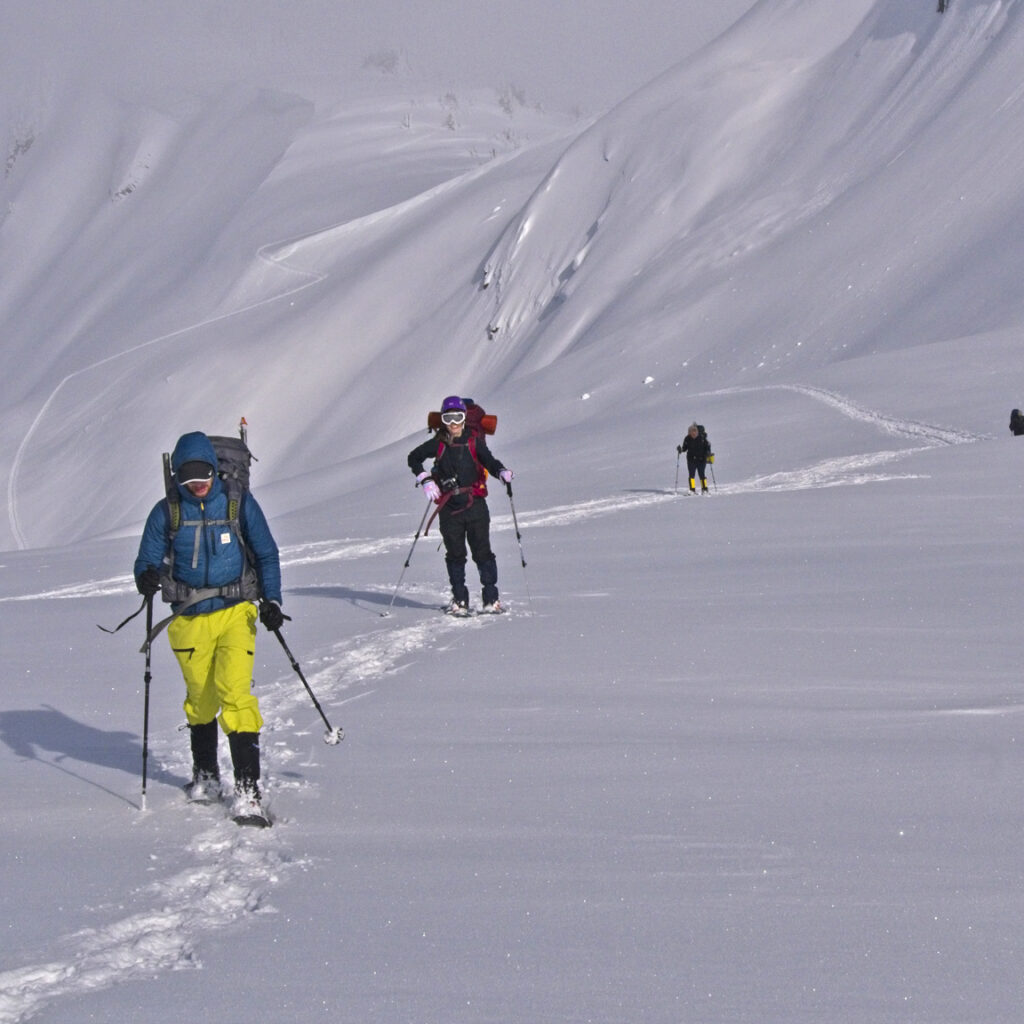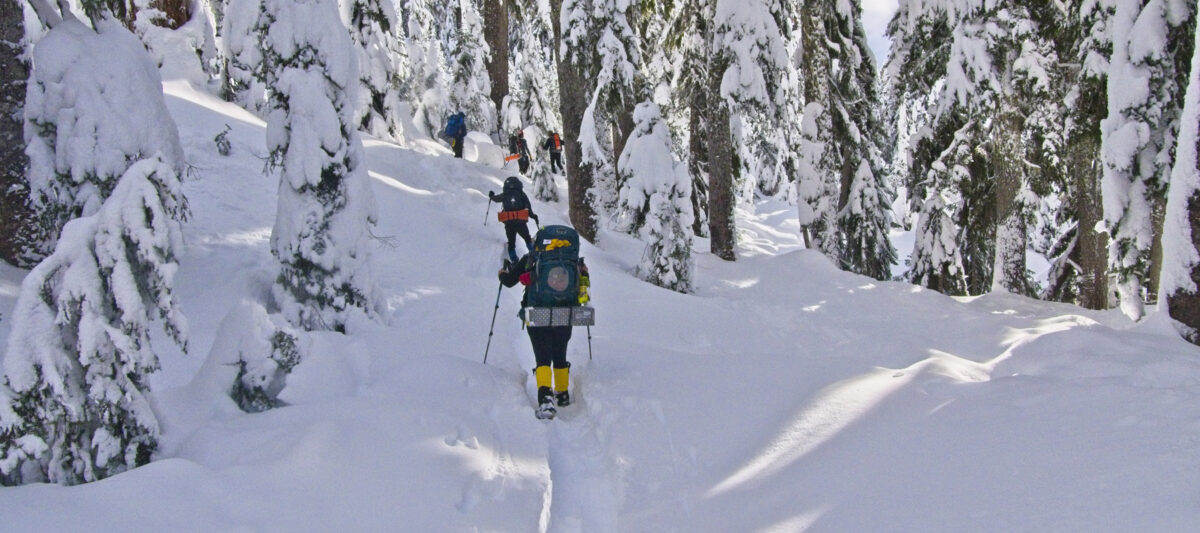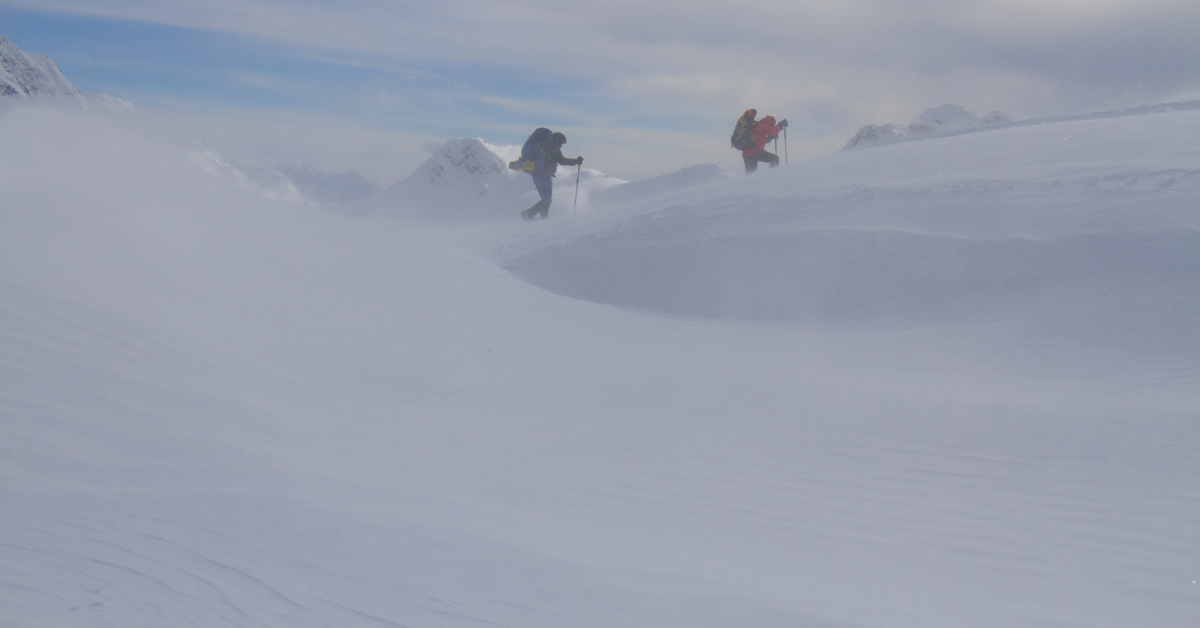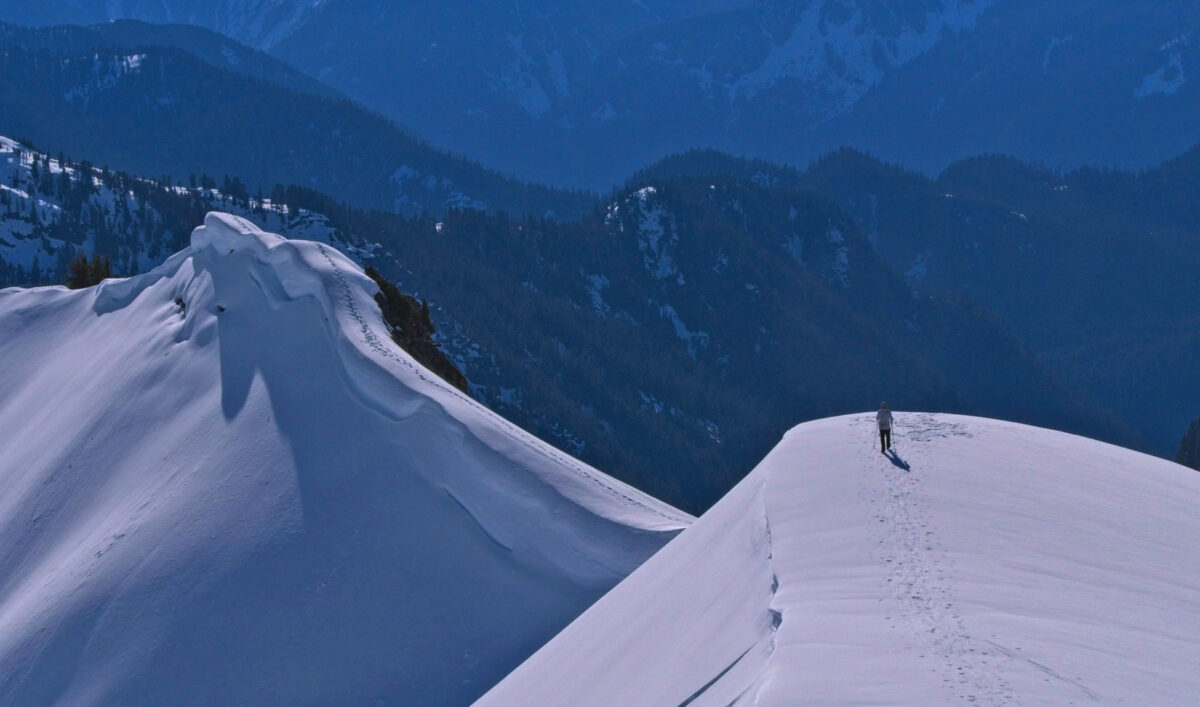When packing a winter backpack, safety is an important consideration. In winter, how you pack matters more than any other time of the year. For example, when you reach the crest of a ridge and encounter a severe wind chill, your rain jacket and gloves need to be at the top of your pack or easily accessible. This post reviews safety considerations and general packing methods.



